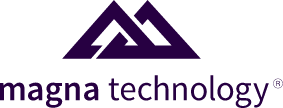When it comes to building a website, your design choices should be more than just visually appealing—they should also support search engine optimization (SEO). By integrating SEO fundamentals into your design process from the start, you can improve search engine visibility, drive more organic traffic, and create a user-friendly experience that keeps visitors on your site longer. Below, we’ll explore the basics of SEO-friendly web design and how to align your creative efforts with search engines in mind.
Start with a Clear Site Structure
Search engines, like Google, crawl and index websites by following links between pages. A well-organized site structure helps these crawlers understand how your content is grouped and how pages relate to one another.
There are several best practices you should follow. A logical hierarchy is crucial. Arrange your pages under categories and subcategories that make sense to users and search engines (e.g., example.com/services/web-design). Use an XML sitemap to list all important pages in one place, as this is a roadmap for search engines. Lastly, stick to intuitive, easy-to-follow navigation menus. Avoid burying critical pages too deeply in the hierarchy.
Mobile-First Design
More than half of global web traffic now comes from mobile devices. In response, search engines have adopted mobile-first indexing, meaning they primarily use the mobile version of your site when determining rankings.
Use responsive design principles or frameworks (e.g., Bootstrap) that automatically adjust layouts to fit various screen sizes. Compress images to reduce load times, and ensure they display properly on smaller screens. Don’t rely solely on emulators—test your design on actual phones or tablets to catch unexpected layout issues.
Optimize Page Speed
A fast-loading website is crucial for both user satisfaction and SEO. Search engines reward faster sites with better rankings, and users are more likely to abandon pages that take longer than a few seconds to load.
To optimize page speed, minimize HTTP Requests. Combine CSS and JavaScript files, and use a Content Delivery Network (CDN) to distribute static assets. Optimize images by using next-gen image formats (e.g., WebP) and tools like TinyPNG or ImageOptim to compress files. Enable browser caching to speed up return visits and use a fast hosting provider.
Use Clean, SEO-Friendly Code
Clean code isn’t just about performance; it also helps search engines parse and interpret your site more effectively. Messy code can lead to indexing issues or slow load times.
Best Practices:
- Semantic HTML: Use descriptive tags like <header>, <section>, <article>, and<footer> to provide context to crawlers.
- Minimal Plugins and Scripts: Each added script increases load time. Only use what’s necessary to maintain essential features.
- Structured Data Markup: Implement schema markup (e.g., Product, Review, FAQPage) to give search engines extra information about your content, which can lead to rich results.
Craft High-Quality Content
Design can lure visitors to your site, but content keeps them there and helps search engines understand what your pages are about. High-quality, relevant content is a linchpin of good SEO.
Identify relevant, low-competition keywords and integrate them naturally into headings, text, and meta tags.
Write with the user in mind, offering insightful, accurate information. Avoid stuffing keywords. Ensure your text is easy to read by breaking it up with headings, bullets, or short paragraphs. Update or add new blog posts, articles, or product pages regularly to signal to search engines that your site is active.
Pay Attention to On-Page Elements
On-page SEO involves optimizing individual web pages to rank higher and earn more relevant traffic. Properly configured on-page elements make it easier for search engines to determine page relevance. Here are best practices for on-page elements:
- Title Tags: Keep titles under 60 characters. Make them descriptive, with your target keyword near the front.
- Meta Descriptions: Write concise, compelling descriptions (around 155–160 characters) that encourage clicks.
- Header Tags (H1, H2, etc.): Use headers to organize content logically, including your focus keyword in the H1 tag.
- URL Structures: Short, descriptive URLs (e.g., example.com/seo-basics) are preferable to generic ones (e.g., example.com/page?id=123).
Don’t Neglect Internal and External Linking
Links are the pathways of the internet. Internal links help search engines understand the hierarchy of your site, while external links (both inbound and outbound) boost credibility and domain authority.
Always link strategically. For internal linking, link to related pages or articles within your own site to guide users and spread link equity. Cite authoritative sources for statistics or references to show credibility. Also, aim for quality backlinks from reputable sites in your industry, as these can significantly boost rankings.
Constantly Monitor and Update
SEO isn’t a “set it and forget it” endeavor. Search engine algorithms evolve, and user behaviors shift over time. Regular monitoring ensures you stay on top of issues and opportunities. Use tools like Google Analytics and Search Console to monitor traffic, bounce rates, and keyword rankings. Periodically check for broken links, slow-loading pages, or duplicate content. Furthermore, keep abreast of major Google updates to tweak your strategies accordingly.
Final Thoughts
Designing a website with SEO in mind involves more than just adding the right keywords. It requires a holistic approach that includes site structure, page speed, mobile responsiveness, clean code, and consistently high-quality content. By integrating these SEO basics into your design process from day one, you’ll create a more discoverable site that not only pleases search engines but also provides a top-notch experience for your users.
Are you looking to revamp your current site or build one from scratch with SEO as a priority? Contact Magna Technology at 617-249-0539 to discuss your needs.




